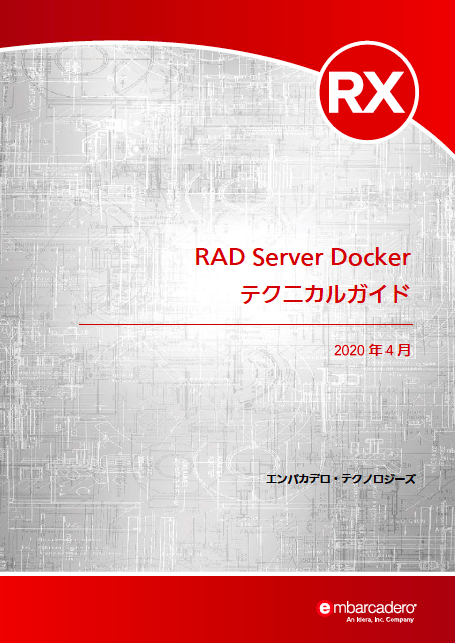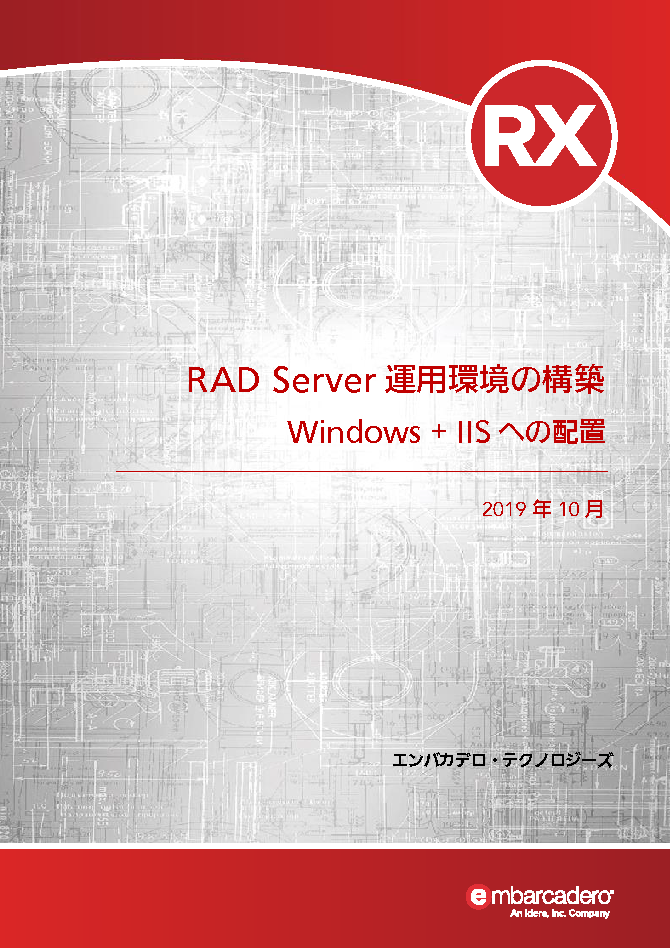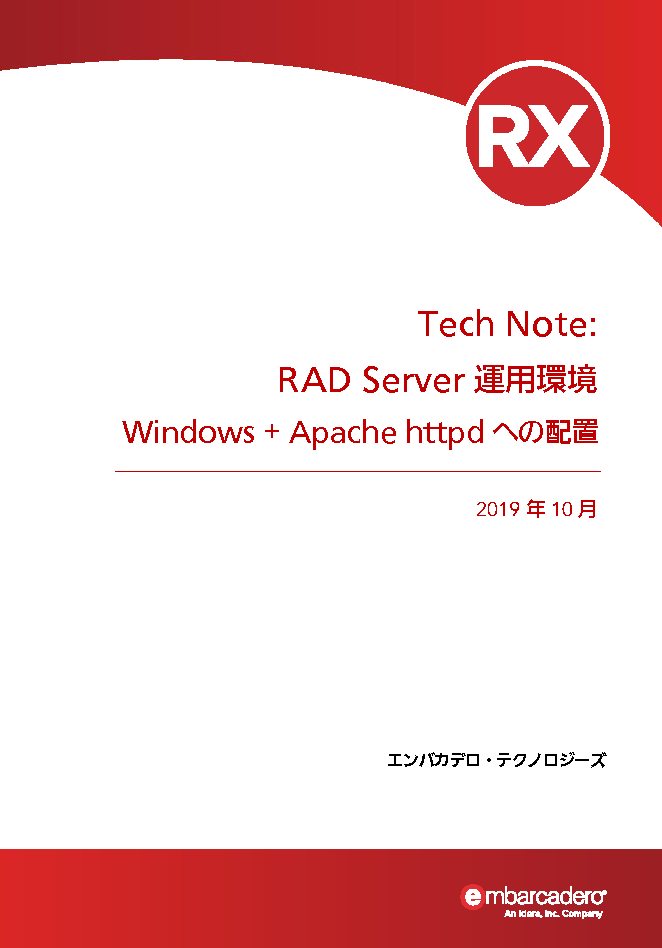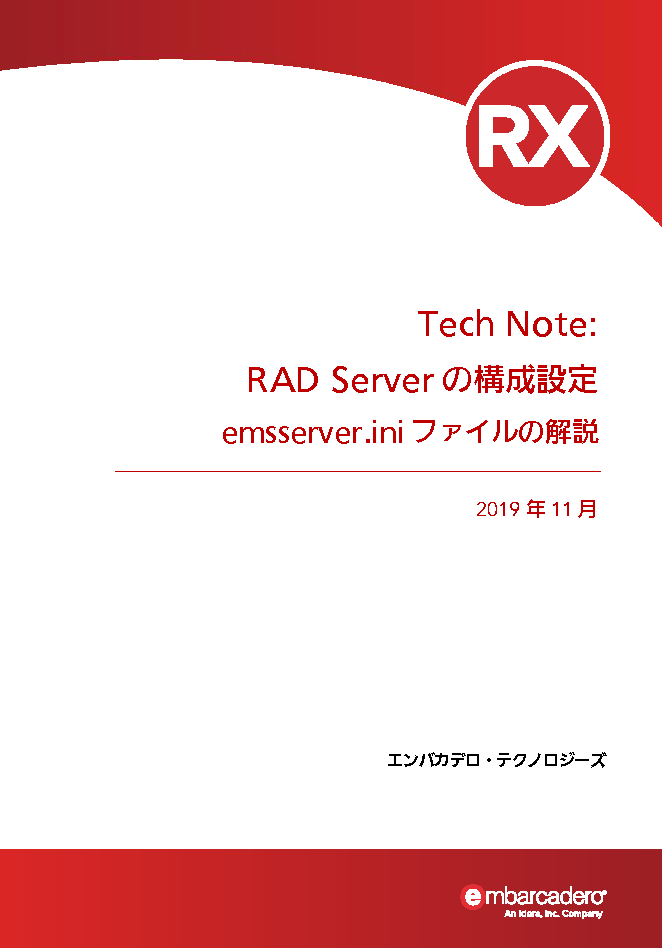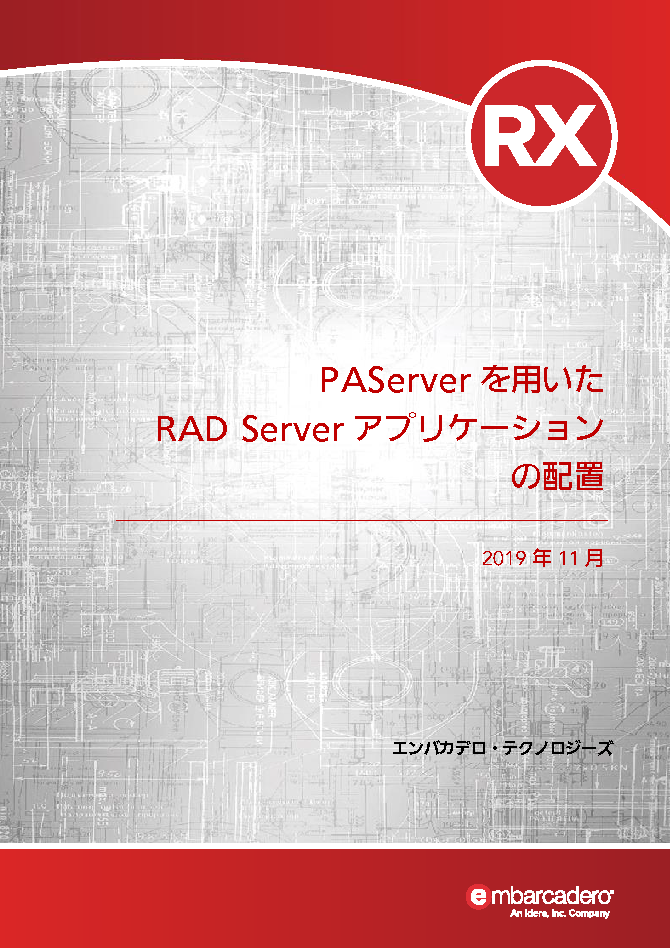RAD Serverに関連するドキュメント
ホワイトペーパー
RAD Server Dockerテクニカルガイド
エンバカデロ・テクノロジーズ
Dockerは、コンテナファイル内のバンドルとしてソフトウェアのパッケージングと提供を可能にするOSレベルの仮想環境。RAD Server向けDockerコンテナを利用することで、RAD Serverアプリケーションの配置や管理を単純化できます。本書では、RAD Server Dockerコンテナの利用方法、活用方法を詳細に解説しています。
企業システムをモバイルに拡張するためのアプリケーションプラットフォーム
エンバカデロ・テクノロジーズ
従来の企業システムをモバイル対応させる際に必要となるアプリケーションプラットフォームについて考察し、その解決策のひとつとしてRAD Serverを検討します。
RAD Server運用環境の構築 - Windows + IISへの配置
エンバカデロ・テクノロジーズ
RAD Serverは、RAD Studio / Delphi / C++Builder Enterprise以上に搭載されていますが、実際の稼働環境でRAD Serverを使ったアプリケーションを動作させるには、RAD Serverの配置操作が必要になります。本書では、Windows + IISの環境を例に、RAD Serverの稼働環境へのインストール手順を解説します。
Tech Note: RAD Server運用環境 - Windows + Apache httpdへの配置
エンバカデロ・テクノロジーズ
本書では、RAD ServerをWindows + Apacheの環境に構築する手順を説明します。ホワイトペーパー「RAD Server運用環境の構築 - Windows + IISへの配置」に対する差分として解説します。
Tech Note: RAD Serverの構成設定 - emsserver.iniファイルの解説
エンバカデロ・テクノロジーズ
RAD Serverを開発環境、そして運用環境で利用する際には、その実行環境に合わせた構成設定が必要です。本書では、RAD Serverの構成ファイルの概要を解説するとともに、そのリファレンス情報を掲載しています。
PAServerを用いたRAD Serverアプリケーションの配置
エンバカデロ・テクノロジーズ
RAD Studioで用意されているPAServerは、マルチデバイス開発などにおいて、IDEと異なる実行時環境へのアプリケーション配置、実行、デバッグなどを目的として利用されますが、サーバーアプリケーションの配置においてもその威力を発揮します。本書では、PAServerの概要やセットアップ方法を解説し、RAD Serverアプリケーションを構成するパッケージの概要と、PAServerを用いた配置手順を紹介します。
その他のRAD Server関連ドキュメント
RAD Serverに関連するブログ記事
ダウンロードフォーム
*は必須項目です。

